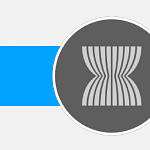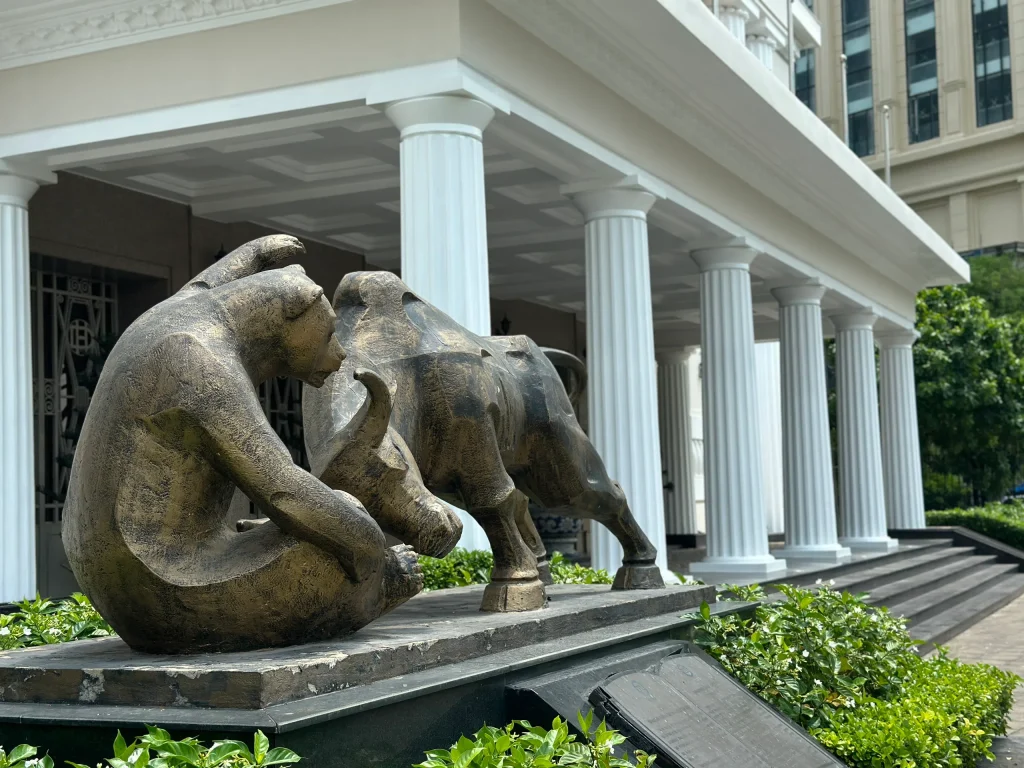[HANOI] Vietnam’s Ho Chi Minh Stock Exchange (HoSE), on Monday (May 5), officially rolled out the most comprehensive infrastructure overhaul to date. This will serve as a foundational step for it to align with international standards and unlock a potential equity-market upgrade to emerging status this year.
The new system, known as KRX, has been under development via a partnership between HoSE and Korea Exchange since 2012. It is expected to address earlier technical challenges, such as order congestion, as well as enable a wide range of advanced features aimed at shortening the settlement cycle and increasing trading capacity, according to an earlier statement from the State Securities Commission.
The upgraded platform launched on Monday has enabled new trading practices, including changes in negotiated and odd-lot transactions, order amendment, derivative contract symbols, trading of securities under restriction, foreign room, as well as margin-value control time.
However, full functionalities will be activated gradually in phases. Some key features are expected to be introduced next year, including the same-day trading (T+0) and central clearing counterparty (CCP) mechanisms, which are crucial to reduce settlement complexity as well as the time and costs associated with accessing funds and securities.
KRX is also designed to facilitate more financial products and instruments in the near future, such as short-selling, algorithmic trading, and options contracts. In addition, it will integrate and develop comprehensive databases encompassing transactions, settlements, ownership, and risk analysis, thus aligning with international standards and enhancing its connectivity with global financial institutions.
“While the system’s launch marks a significant step forward, its full operational impact will take time to materialise,” said Tyler Nguyen, chief market strategist at Ho Chi Minh City Securities Corporation (HSC).
A NEWSLETTER FOR YOU

Friday, 8.30 am
Asean Business
Business insights centering on South-east Asia’s fast-growing economies.
Petri Deryng, portfolio manager at PYN Fund Management, believes that once KRX is fully operational, Vietnam’s stock market could see its daily liquidity reach four to five times higher than the current level.
The average daily trading value on the HoSE was about US$850 million in 2024, marking a nearly 20 per cent increase compared with that in 2023, with an end-of-year market capitalisation of listed stocks surpassing US$290 billion. This puts HoSE’s liquidity on a par with that in Indonesia’s and Malaysia’s stock exchanges, which are classified as secondary emerging markets by global index provider FTSE.
In a note to investors on Mar 24, Deryng stated that FTSE emphasised the importance of getting the new KRX trading system up and running in Vietnam, “as its features create a path to other changes and are an important factor in the market status assessment”.
Potential market upgrade in 2025
The London-headquartered index provider has included Vietnam in its watch list for a possible upgrade to emerging-market status since 2018. However, according to its interim report released on Apr 8, Vietnam fell short of meeting two criteria.
The first one was “Settlement Cycle (delivery versus payment)”, which was rated as “restricted” due to the current practice of a pre-trading check to ensure the availability of funds prior to executing trades. This prevents trade failures artificially, which leads to the unrated criterion of “Settlement – costs associated with failed trades”.
Last November, Vietnam’s authorities addressed these impediments by removing the prefunding requirement. This had asked foreign institutional investors to deposit the entire funds before placing “buy” orders, thus reducing capital efficiency and making the country less attractive compared with other markets.
With the new rule in place, securities companies with sufficient capacity can place orders on behalf of these investors before the funds are fully transferred, as long as payment obligations are met by the settlement date.
“Given this development, FTSE Russell continues to monitor the market and seek feedback from market participants on the (non-prefunding) model and the management of failed trades,” the index provider added in the April report. Vietnam aims to be reclassified as a secondary emerging-market status in 2025, with FTSE expected to provide the next update on the status in its annual review of equity markets this September.
Some brokers are already planning to offer T+0 settlement and a netting mechanism – which consolidates multiple transactions into a single net obligation – to top-tier institutional clients, such as exchange-traded funds (ETFs), which are major investors in the FTSE. According to market watchers, this early adoption could facilitate a smoother transition and accelerate the broader market upgrade.
However, the current broker-led model places the credit and settlement risk on the brokers. The CCP, which is slated to be enabled by KRX in the coming year, could mitigate this systemic risk by becoming the legal counterparty to both sides of a trade, guaranteeing settlement even if one party defaults, thereby eliminating the need for prefunding.
Foreign capital could play bigger role
As technical barriers are lifted, HSC’s Nguyen believes that foreign capital, particularly from ETFs tracking indices such as MSCI Emerging Markets or FTSE Emerging Markets, is likely to play a larger role in Vietnam’s equity market.
“The anticipated initial inflows of US$3 billion to US$4 billion from a potential FTSE upgrade represent only the beginning; greater allocations are likely to follow as Vietnam further integrates into the global financial system,” he noted.
The World Bank forecast that the stock-market upgrade could bring up to US$25 billion in new investments from international investors to Vietnam by 2030.
However, short-term and medium-term prospects remain uncertain, especially after US President Donald Trump hit Vietnam with one of Asia’s highest reciprocal tariffs of 46 per cent on Apr 2.
The benchmark VN Index then showed heightened volatility and dropped a sharp 17 per cent on Apr 9. It was down 6.2 per cent on a monthly basis as at the end of April, bringing the year-to-date performance from a gain of 4 per cent as at the end of March to a loss of 3.2 per cent as at May 2.
The VN Index closed at 1,240.05 on May 5, up 1.1 per cent after the official launch of the KRX system, which coincided with the first trading day after a five-day-long holiday.
“In the interim, we expect positive sentiment around the roll-out to benefit brokerage stocks,” Nguyen added. “(However,) trade-war tensions remain a key sentiment driver.”


